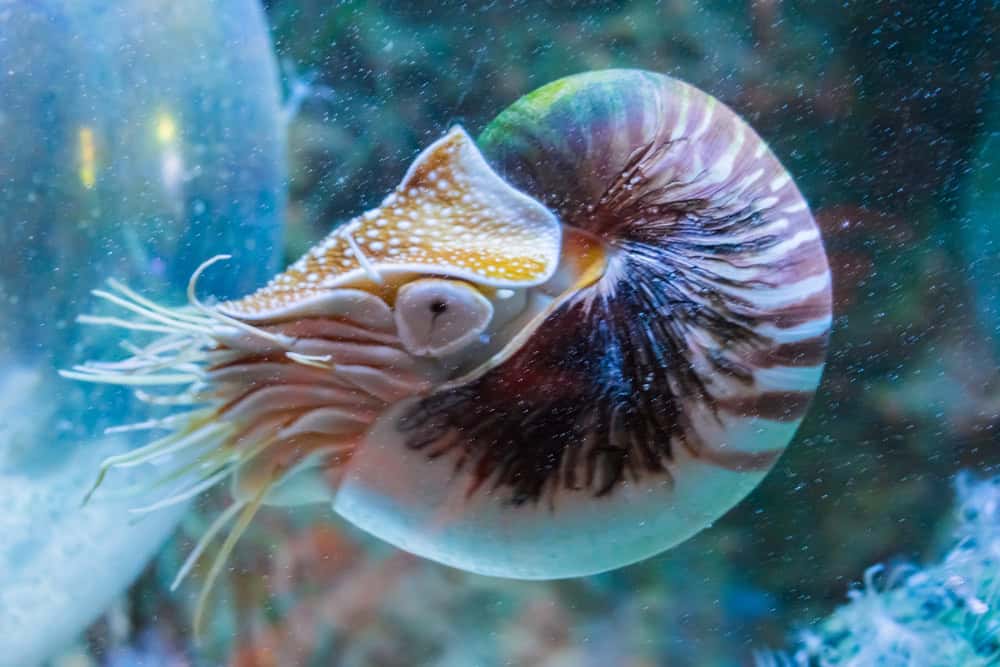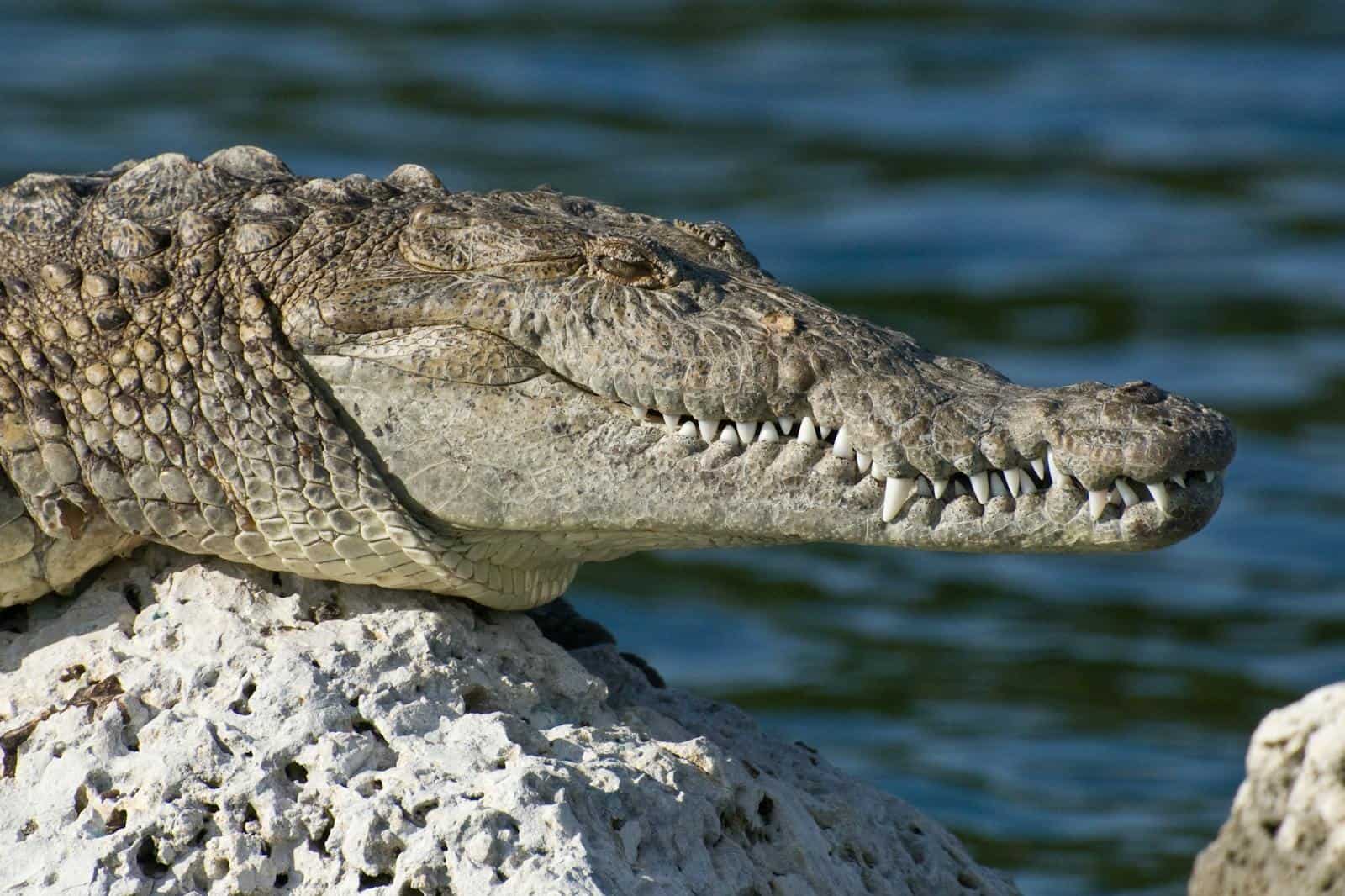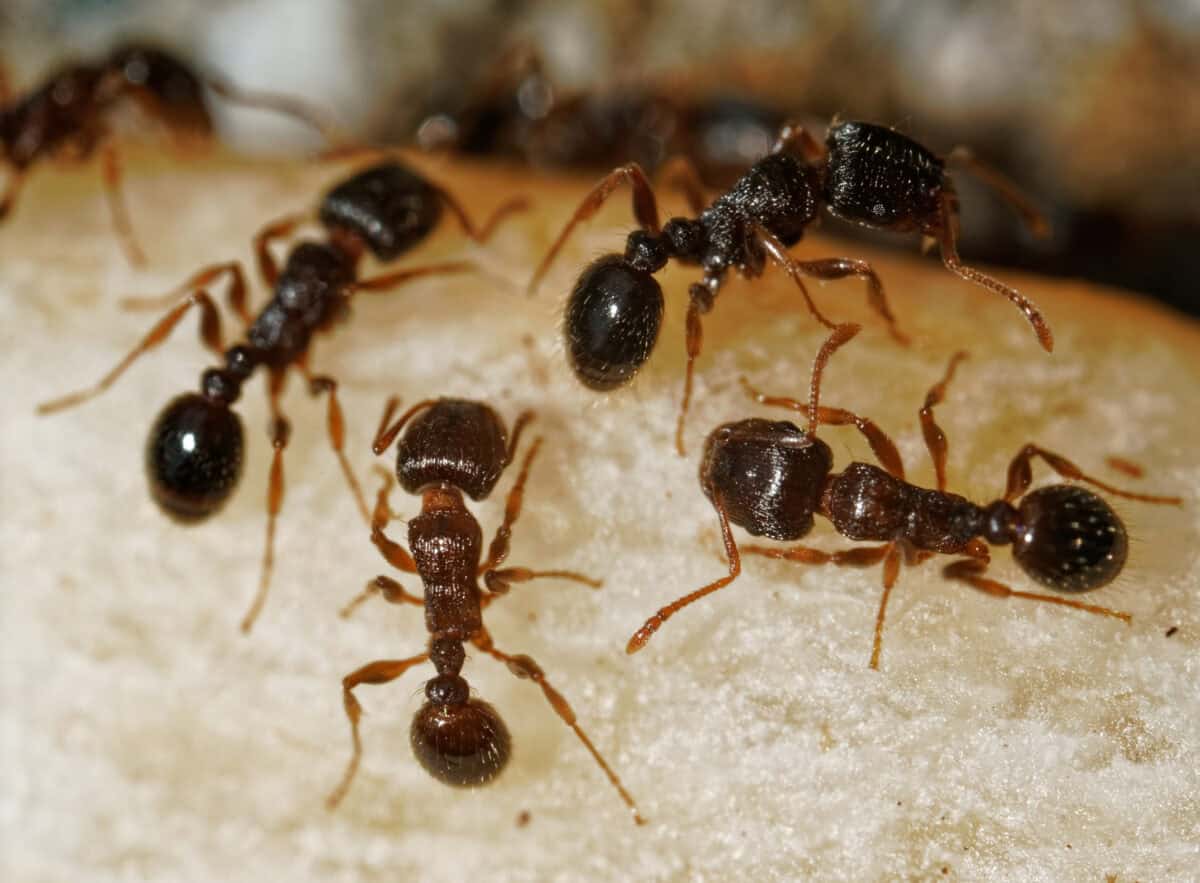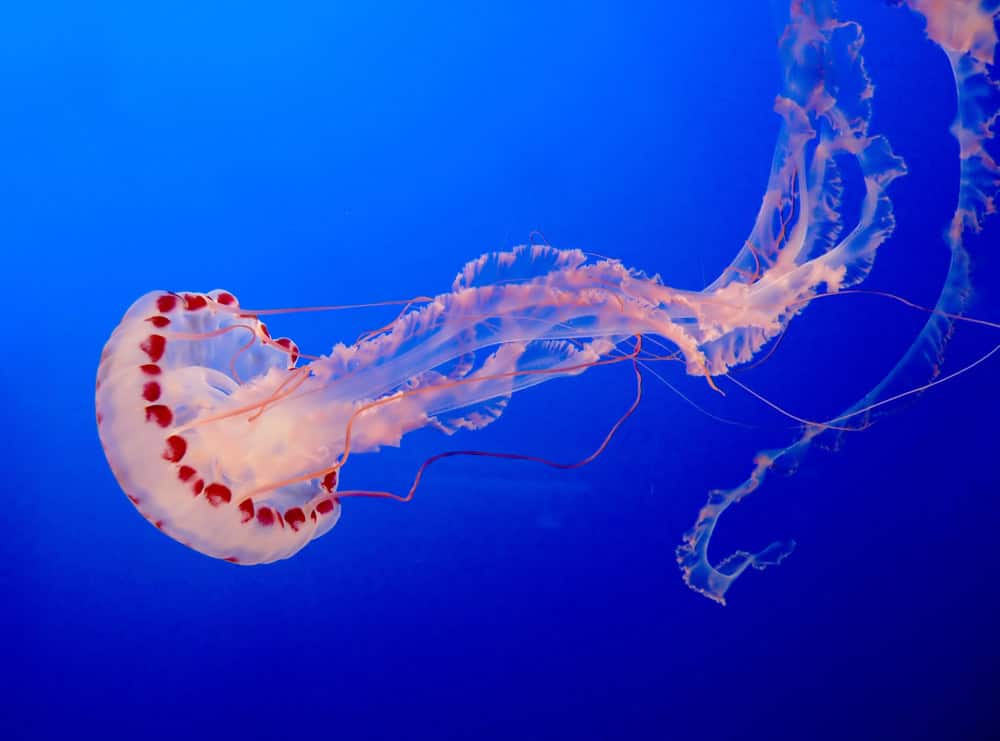In the constant flux of evolution, some species stand as remarkable exceptions—living fossils that have remained virtually unchanged for millions of years. These evolutionary stalwarts have found their perfect niche, requiring little to no adaptation despite dramatic changes in Earth’s climate, geography, and ecosystems. While most organisms continuously evolve to survive, these resilient species discovered their winning formula long ago and have stuck with it through the ages. Their endurance offers fascinating insights into evolutionary biology and the conditions that sometimes favor stasis over change. Let’s explore twelve extraordinary creatures that time seems to have forgotten, persisting virtually unchanged since the time of dinosaurs or even earlier.
Horseshoe Crabs 445 Million Years of Success

Often called “living fossils,” horseshoe crabs have remained essentially unchanged for an astounding 445 million years. These ancient arthropods predate the dinosaurs by over 200 million years and have survived through all five mass extinction events. Their distinctive horseshoe-shaped carapace and long, pointed tail spines would be instantly recognizable to a time traveler from the Ordovician period. Horseshoe crabs aren’t actually crabs but are more closely related to spiders and scorpions. Their blue blood contains a unique compound called Limulus Amebocyte Lysate (LAL), which is essential in testing medical equipment and vaccines for bacterial contamination. This evolutionary marvel continues to thrive in coastal habitats worldwide, with their design so perfectly adapted to their environment that natural selection has had little reason to modify it for nearly half a billion years.
Nautilus The Living Spiral of the Seas

The chambered nautilus has been swimming Earth’s oceans for over 500 million years, maintaining its distinctive spiral shell design throughout this vast timespan. Unlike many of its cephalopod relatives that evolved dramatically over time (like squids and octopuses), the nautilus has kept its external shell and primitive eye structure. Its beautiful logarithmic spiral shell houses a series of gas-filled chambers that the animal uses to regulate buoyancy as it moves through different ocean depths. Nautiluses possess up to 90 tentacles without suckers, which they use to catch prey. Their pinhole eyes lack lenses but still provide adequate vision for their deep-sea lifestyle. Today’s nautilus would be immediately recognizable to a marine biologist from the Paleozoic era, making it one of the most enduring designs in evolutionary history. Their remarkable persistence speaks to the perfect adaptation of their body plan to their ecological niche in deeper ocean waters.
Coelacanth The Fish That “Returned from the Dead”

The coelacanth stands as one of science’s most spectacular rediscoveries. For millions of years, these large, lobed-finned fish swam in ancient seas alongside dinosaurs, but scientists believed they had gone extinct about 65 million years ago—until one was caught off the coast of South Africa in 1938. Virtually unchanged for approximately 360 million years, coelacanths retain primitive features that make them fascinating subjects for studying vertebrate evolution. They possess a notochord (a hollow fluid-filled tube) rather than a well-developed spine, and their lobed fins move in an alternating pattern reminiscent of four-limbed walking, providing clues about how fish may have transitioned to land. Growing up to 6.5 feet long and weighing up to 200 pounds, these blue-gray fish have a distinctive three-lobed tail and scales that feel like rough sandpaper. With limited natural predators and a slow, efficient deep-water lifestyle, coelacanths have had little evolutionary pressure to change their successful body design across geological eras.
Ginkgo Biloba A Tree from the Age of Dinosaurs

The ginkgo tree represents an extraordinary botanical survivor that has remained essentially unchanged for over 200 million years. Fossil evidence shows that leaves from Jurassic-era ginkgoes are virtually indistinguishable from those on modern trees. As the sole survivor of the once-diverse Ginkgoaceae family, today’s Ginkgo biloba carries the genetic legacy of an ancient lineage that once dominated forests worldwide. These deciduous trees can grow over 100 feet tall and live for more than 1,000 years, with some specimens in China estimated to be over 2,500 years old. Their distinctive fan-shaped leaves with a central split give them their name “biloba,” meaning two-lobed. Ginkgoes show remarkable resilience to environmental stressors, including pollution, pests, and diseases. This hardiness was dramatically demonstrated when six ginkgo trees survived the atomic bombing of Hiroshima in 1945, despite being less than a mile from the blast’s epicenter. The trees later regrew without mutation—a testament to their evolutionary stability and robust genetic makeup that has remained successful through multiple global extinction events.
Sturgeon Armored Giants of Prehistoric Waters

Sturgeons have patrolled Earth’s rivers and coastlines for more than 200 million years, maintaining their distinctive armored appearance and primitive features since the time dinosaurs first emerged. These large, bony fish appear almost reptilian with their rows of scutes (bony plates) running along their bodies and their shark-like heterocercal tails. Unlike most modern fish, sturgeons retain a cartilaginous skeleton and lack scales. Their most distinctive feature may be their protrusible tube-like mouths, which they extend downward to vacuum up food from river and lake bottoms. Some sturgeon species can grow enormously large—the beluga sturgeon can exceed 20 feet in length and weigh over 3,000 pounds, making it among the largest freshwater fish on Earth. Despite weathering countless environmental changes over 200 million years, many sturgeon species now face extinction due to human activities like overfishing (particularly for their eggs, sold as caviar), river damming, and habitat destruction. Their long evolutionary success story may be in jeopardy despite having a body plan that served them well through multiple geological epochs.
Tuatara The Living Fossil of New Zealand

New Zealand’s tuatara represents the sole survivor of an entire order of reptiles (Rhynchocephalia) that flourished during the age of dinosaurs. Looking at a tuatara today is essentially like looking at its ancestors from 225 million years ago, as their body plan has remained remarkably stable. Though superficially resembling lizards, tuataras have several distinct ancient features that set them apart, including unique teeth that are fused directly to the jawbone rather than set in sockets, and a primitive “third eye” on top of the head—a light-sensitive organ covered by scales in adults. Tuataras also possess one of the slowest metabolisms among reptiles, allowing them to thrive in New Zealand’s cool climate and remain active at temperatures as low as 45°F (7°C). These extraordinary creatures exhibit extremely slow growth and reproductive rates, reaching sexual maturity at about 20 years and potentially living over 100 years. With a genome recently sequenced in 2020, scientists discovered that tuataras have one of the largest reptile genomes and a unique combination of genes that may explain their evolutionary conservatism across vast stretches of time.
Tadpole Shrimp The Oldest Living Animal Species

Tadpole shrimp, particularly the species Triops cancriformis, hold the distinction of being possibly the oldest living animal species, having remained virtually unchanged for at least 220 million years. Fossils from the Triassic period are nearly identical to modern specimens, earning these crustaceans their reputation as perhaps the most conservative animal design in evolutionary history. Their distinctive appearance includes a large shield-like carapace, numerous legs (up to 70 pairs), and two long projections from their tail end. Particularly remarkable is their adaptation to temporary water environments—their eggs can remain dormant for decades in dry soil, hatching rapidly when rains create seasonal pools. These “living fossils” complete their entire life cycle in just a few weeks, reaching adulthood in days and rapidly producing the next generation before their ephemeral aquatic habitats dry up. This specialized adaptation to unpredictable, temporary environments may explain their evolutionary stasis—they’ve perfected a niche that few other organisms compete for, requiring little change to their successful body plan across geological time scales.
Lungfish Breathing Relics from the Devonian

Lungfish represent living windows into the transition of vertebrate life from water to land, having remained remarkably consistent in their body design for approximately 400 million years. These extraordinary fish possess both gills and primitive lungs, allowing them to breathe air when water quality deteriorates or during seasonal droughts. Their lobed fins contain bones arranged in patterns similar to those in tetrapod limbs, suggesting their close evolutionary relationship to the ancestors of land vertebrates. Modern lungfish, particularly the Australian and South American species, can survive extended periods of drought by burrowing into mud and entering a state of aestivation—a summer dormancy where their metabolism slows dramatically as they breathe air through a small opening to their burrow. The African lungfish can survive in this state for up to four years without food or water. Lungfish also retain primitive features in their circulatory system that prefigure adaptations necessary for land-dwelling vertebrates. With their successful dual respiratory strategy and ability to endure harsh environmental conditions, lungfish have had little evolutionary pressure to change their fundamental body plan since the Devonian period.
Cycads Ancient Survivors of Plant Evolution

Cycads represent one of Earth’s oldest plant lineages, having maintained their distinctive form for over 280 million years with minimal changes. These palm-like gymnosperms dominated the global landscape during the Mesozoic Era (the “Age of Cycads and Dinosaurs”) before flowering plants rose to prominence. Modern cycads appear strikingly similar to their fossilized ancestors, with their characteristic crown of stiff, pinnate leaves atop unbranched trunks covered in leaf bases. Unlike most modern plants, cycads reproduce via exposed seeds borne on specialized cone-like structures rather than enclosed in fruits. They also exhibit remarkable longevity—some individual plants live over 1,000 years, with extremely slow growth rates averaging only a few centimeters per year. Cycads maintain a mutualistic relationship with specialized cyanobacteria in their roots, allowing them to fix atmospheric nitrogen and thrive in nutrient-poor soils. This evolutionary stability across geological timescales makes cycads invaluable to botanists studying plant evolution, though human habitat destruction and illegal collection for ornamental purposes now threaten many of the approximately 350 surviving cycad species with extinction.
Crocodilians Reptilian Rulers Through the Ages

Crocodilians—including crocodiles, alligators, caimans, and gharials—have maintained their distinctive body plan for approximately 200 million years, coexisting with dinosaurs and surviving the mass extinction event that eliminated them. The basic crocodilian design of an elongated snout, powerful tail, armored skin, and splayed legs has proven so successful that it has required minimal evolutionary adjustment since the Triassic period. Modern crocodilians retain numerous primitive features, including a four-chambered heart (rare among reptiles), a palatal valve that allows breathing while the mouth contains water, and specialized pressure receptors along their jaws that can detect minute disturbances in water. Their remarkable sensory capabilities extend to excellent night vision, acute hearing, and scent glands that facilitate complex social interactions. Despite their ancient lineage and seemingly “primitive” appearance, crocodilians demonstrate sophisticated behaviors, including tool use (carrying sticks to lure nesting birds), cooperative hunting, and extended parental care. Their metabolic flexibility, allowing them to survive extended periods without food, and their semi-aquatic lifestyle have enabled these apex predators to weather enormous environmental changes while maintaining essentially the same body plan that served their ancestors during the time of Tyrannosaurus rex.
Jellyfish 500 Million Years of Gelatinous Simplicity

Jellyfish have drifted through Earth’s oceans in essentially their current form for over 500 million years, with fossils from the Cambrian period showing creatures remarkably similar to modern species. These gelatinous invertebrates operate with a body plan of elegant simplicity—a bell-shaped medusa with trailing tentacles—that has required minimal modification across half a billion years of evolutionary history. Lacking a brain, blood, or even a digestive system in the conventional sense, jellyfish instead possess a decentralized nerve net that coordinates their pulsing movements and responses to environmental stimuli. Their bodies consist of up to 98% water, with only a thin layer of cells separating their internal structure from the surrounding ocean. Some jellyfish species demonstrate biological immortality through a process called transdifferentiation, where adult medusae can revert to an earlier polyp stage when stressed, essentially resetting their biological clock. The enduring success of jellyfish through multiple mass extinctions and dramatic ocean chemistry changes suggests their simple design represents an evolutionary pinnacle for their ecological niche—drifting predators capturing prey with stinging cells while requiring minimal energy investment in body structures.
Martialis Huereka The “Ant from Mars”

While most living fossils discussed here have extensive paleontological records, Martialis huereka represents a different type of evolutionary conservation—a “ghost lineage” discovered alive without prior fossil evidence. First discovered in the Amazon rainforest in 2000 and scientifically described in 2008, this pale, eyeless ant belongs to the oldest known distinct lineage of ants, having diverged from other ant species approximately 120 million years ago. Its name “Martialis huereka” (meaning “ant from Mars”) reflects how alien and primitive it appeared to researchers, representing a living specimen of what early ants might have looked like. This subterranean predator has retained ancestral characteristics lost in most modern ant species, including specialized mouthparts adapted for a predatory lifestyle that likely resembles the hunting strategies of the earliest ants. Genetic analysis confirms its position at the base of the ant evolutionary tree, suggesting that the earliest ants were soil-dwelling hunters rather than the surface-foraging species that evolved later. The survival of this living fossil provides entomologists with a rare glimpse into the origins of social insect evolution, demonstrating how some lineages can persist in specialized ecological niches with minimal morphological change for tens of millions of years.
Conclusion: The Enduring Legacy of Evolutionary Conservation

The remarkable species examined in this article challenge our conventional understanding of evolution as a constant march toward novelty and change. These living fossils demonstrate that when a body plan achieves optimal adaptation to a stable ecological niche, evolutionary pressures may actually favor conservation rather than innovation. Their persistence across vast geological timescales offers invaluable windows into Earth’s biological past and provides scientists with unique opportunities to study successful evolutionary designs that have weathered multiple extinction events and dramatic planetary changes. These species also highlight the delicate balance of natural selection—while they have remained unchanged for millions of years due to their perfect adaptation to specific environments, many now face extinction precisely because those specialized adaptations make them vulnerable to rapid human-induced environmental changes. As we marvel at these evolutionary time travelers, we must also recognize our responsibility to preserve them and the ancient genetic heritage they carry. In a very real sense, these living fossils connect us directly to Earth’s distant past, offering both scientific insights and a profound reminder of life’s resilience and the deep time perspective of evolutionary processes.
- 12 US States Where Wolves Are Making a Comeback - August 13, 2025
- 10 Most Dangerous Hiking Trails in the US - August 13, 2025
- 12 Creatures That Glow in the Dark and Why It Helps Them Survive - August 13, 2025

